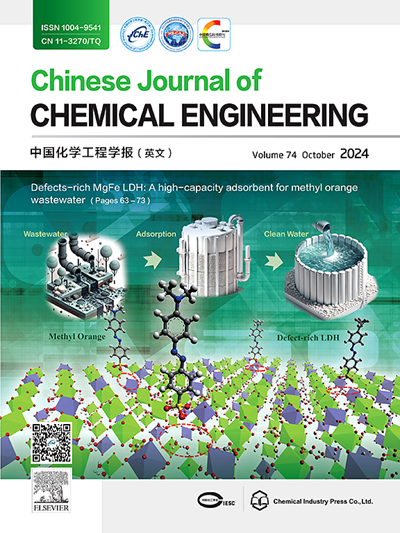Machine-learning-assisted high-throughput computational screening of the n-hexane cracking initiator
IF 3.7
3区 工程技术
Q2 ENGINEERING, CHEMICAL
引用次数: 0
Abstract
This study leverages machine learning to perform high-throughput computational screening of n-hexane cracking initiators. Artificial neural networks are applied to predict the chemical performance of initiators, using simulated pyrolysis data as the training dataset. Various feature extraction methods are utilized, and five neural network architectures are developed to predict the co-cracking product distribution based on molecular structures. High-throughput screening of 12946 molecules outside the training dataset identifies the top 10 initiators for each target product—ethylene, propylene, and butadiene. The relative error between predicted and simulated values is less than 7%. Additionally, reaction pathway analysis elucidates the mechanisms by which initiators influence the distribution of cracking products. The proposed framework provides a practical and efficient approach for the rapid identification and evaluation of high-performance cracking initiators.
机器学习辅助下正己烷裂化引发剂的高通量计算筛选
本研究利用机器学习对正己烷裂解引发剂进行高通量计算筛选。以模拟热解数据作为训练数据,应用人工神经网络对引发剂的化学性能进行预测。利用了多种特征提取方法,开发了5种基于分子结构的神经网络结构来预测共裂化产物分布。训练数据集外的12946个分子的高通量筛选确定了每个目标产品(乙烯,丙烯和丁二烯)的前10个引发剂。预测值与模拟值的相对误差小于7%。此外,反应路径分析阐明了引发剂影响裂化产物分布的机理。该框架为快速识别和评价高性能裂纹引发剂提供了一种实用有效的方法。
本文章由计算机程序翻译,如有差异,请以英文原文为准。
求助全文
约1分钟内获得全文
求助全文
来源期刊

Chinese Journal of Chemical Engineering
工程技术-工程:化工
CiteScore
6.60
自引率
5.30%
发文量
4309
审稿时长
31 days
期刊介绍:
The Chinese Journal of Chemical Engineering (Monthly, started in 1982) is the official journal of the Chemical Industry and Engineering Society of China and published by the Chemical Industry Press Co. Ltd. The aim of the journal is to develop the international exchange of scientific and technical information in the field of chemical engineering. It publishes original research papers that cover the major advancements and achievements in chemical engineering in China as well as some articles from overseas contributors.
The topics of journal include chemical engineering, chemical technology, biochemical engineering, energy and environmental engineering and other relevant fields. Papers are published on the basis of their relevance to theoretical research, practical application or potential uses in the industry as Research Papers, Communications, Reviews and Perspectives. Prominent domestic and overseas chemical experts and scholars have been invited to form an International Advisory Board and the Editorial Committee. It enjoys recognition among Chinese academia and industry as a reliable source of information of what is going on in chemical engineering research, both domestic and abroad.
 求助内容:
求助内容: 应助结果提醒方式:
应助结果提醒方式:


